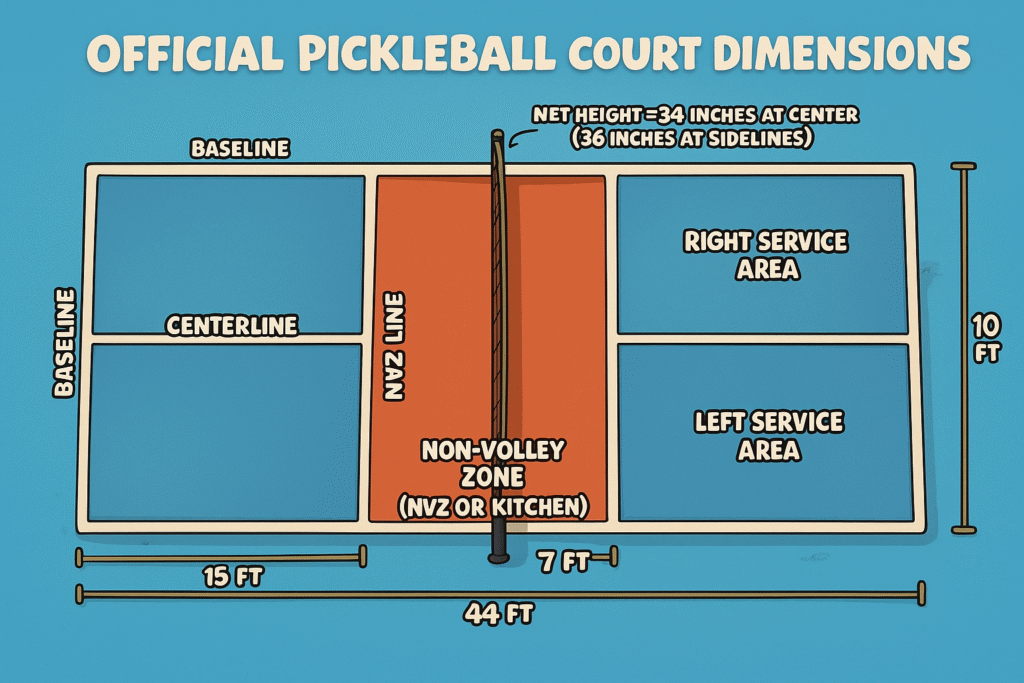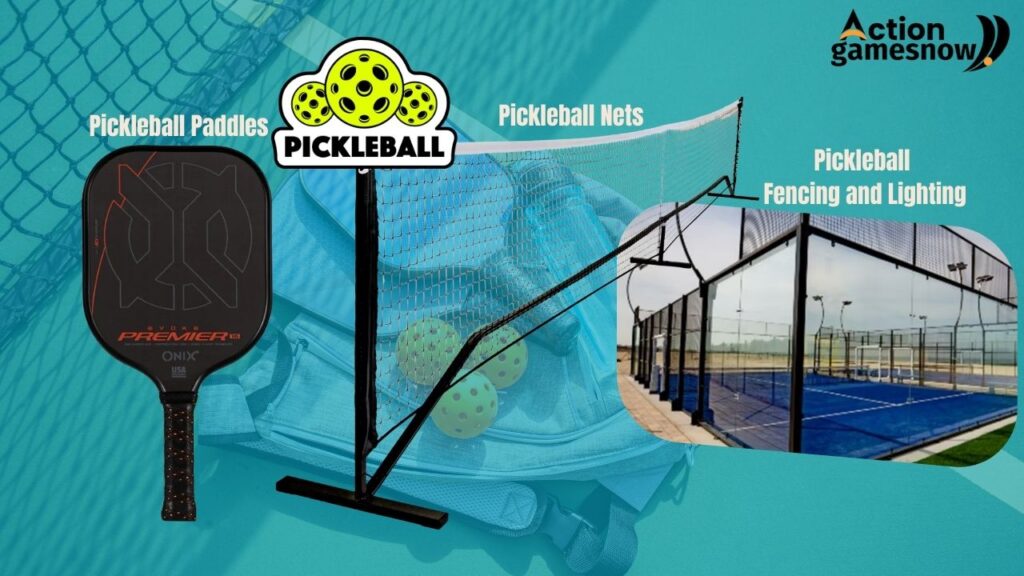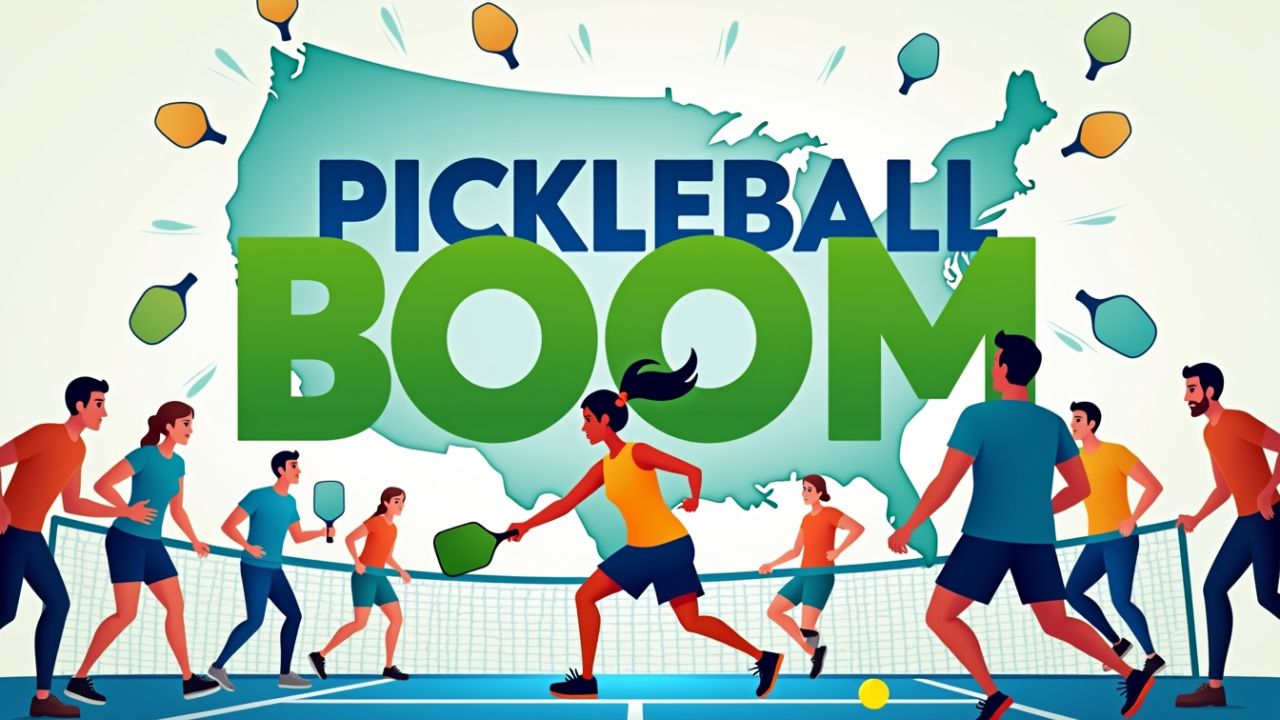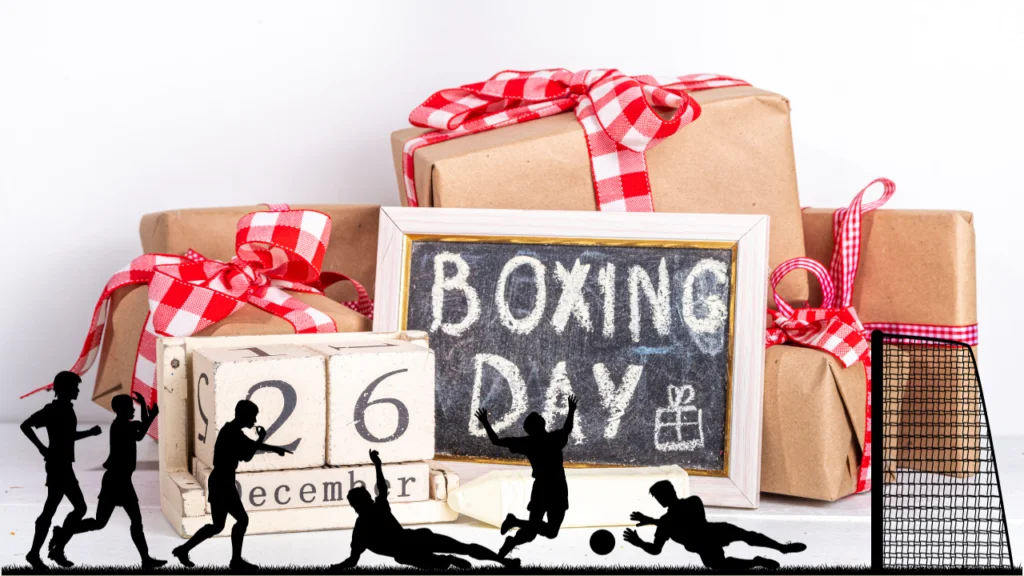Pickleball History of the Game
Pickleball Origins and History
Pickleball was invented in the summer of 1965 on Bainbridge Island, Washington, by Joel Pritchard, Bill Bell, and Barney McCallum. The game was born out of a desire to create a family-friendly activity that everyone could enjoy, regardless of age or skill.
Using improvised equipment—ping pong paddles and a perforated plastic ball—the first games were played on an old badminton court with a lowered net
The Name “Pickleball”
The name “pickleball” has two origin stories. The most widely accepted is that it was named after the “pickle boat” in crew, a term for a boat crewed by leftover rowers, reflecting the sport’s blend of different games.
Another story claims it was named after the Pritchards’ dog, Pickles, but historical evidence suggests the dog was named after the game.
Pickleball Early Growth and Organization
The first permanent pickleball court was built in 1967. By the 1970s, the game had formalized rules and began to spread beyond Washington. The USA Pickleball Association (USAPA), now known as USA Pickleball, was founded in 1984 to standardize rules and promote the sport nationally. The first official tournament was held in 1976, and by 1990, pickleball was played in all 50 U.S. states
Pickleball in the United States and International Pickleball
Pickleball’s popularity exploded in the 21st century, becoming the fastest-growing sport in the U.S. from 2021 to 2024, with nearly 20 million participants in 2024.
Internationally, the sport is governed by organizations like the International Pickleball Federation (IPF), with over 80 member countries and a growing presence in Europe, Asia, and beyond. Major international tournaments, such as the Bainbridge Cup and the English Open, have helped globalize the sport.
USA Pickleball
USA Pickleball is the official governing body for the sport in the United States. It sets the rules, sanctions tournaments, supports grassroots development, and drives the sport’s explosive growth through youth programs, infrastructure support, and community outreach
Pickleball Court and Equipment
Pickleball Court Dimensions

A standard pickleball court measures 20 feet wide by 44 feet long for both singles and doubles play. The court is divided into right and left service courts and features a 7-foot non-volley zone (the “kitchen”) on each side of the net.
Pickleball Net Specifications
The net is 36 inches high at the sidelines and 34 inches at the center, spanning 22 feet in width.
Pickleball Surface and Setup
Outdoor courts are typically made of asphalt or concrete, while indoor courts may use wood or rubber. The recommended total playing area, including overruns, is 30 feet by 60 feet to allow for safe movement.
Pickleball Equipment

• Pickleball Paddles: Originally made of wood, now commonly composite or graphite.
• Pickleball Balls: Perforated plastic balls, with different designs for indoor and outdoor play.
• Pickleball Nets: Portable or permanent, with tensioning systems to maintain height.
• Pickleball Fencing and Lighting: Chain link fencing and proper lighting are standard for dedicated facilities.
Pickleball Definitions (Glossary)
Pickleball has a unique vocabulary. Here are some essential terms:
- Pickleball Ace: A serve that is untouched by the receiver
- Pickleball Dink: A soft shot landing in the opponent’s kitchen.
- Pickleball Double Bounce Rule: The ball must bounce once on each side before volleys are allowed
- Pickleball Fault: Any rule violation that stops play
- Pickleball Kitchen: Slang for the non-volley zone.
- Pickleball Let: A serve that hits the net but lands in the correct service court; play continues.
- Pickleball Rally: Continuous play after the serve and before a fault.
- Pickleball Side Out: When the serve passes to the opposing team.
- Pickleball Volley: Hitting the ball in the air before it bounces
For a more comprehensive glossary, see official rulebooks and dedicated pickleball resources.
Pickleball – The Serve, Service Sequence, and Scoring Rules
Pickleball Serving Rules
- The serve must be made underhand, diagonally cross-court, and land in the opponent’s service court.
- The server must stand behind the baseline and within the sideline and centerline extensions.
- The entire score must be called before serving
Pickleball Service Sequence
- Pickleball Singles: Serve from the right when the score is even, left when odd.
- Pickleball Doubles: Both players serve before a side out, except at the start of the game when only one player serves. After each point, the server switches sides
Pickleball Scoring
- Only the serving team can score points.
- Games are typically played to 11 points, win by 2.
- Points are scored when the receiving team commits a fault
How to Play Pickleball
Players serve underhand, let the ball bounce once on each side (double bounce rule), and then may volley or groundstroke. The objective is to win rallies by forcing faults or outmaneuvering opponents, using a mix of dinks, drives, and lobs.
Pickleball – Service and End Selection Rules
- At the start of a match, a fair method (e.g., coin toss) determines which team chooses to serve, receive, or select ends.
- The winner of the toss chooses one option; the other team chooses from the remaining options.
- Teams change ends at the midpoint of a single game (e.g., at 6 points in a game to 11) and between games in multi-game matches
- In doubles, the starting server can be changed between games, and the starting server must wear a visible identifier as determined by the tournament director.
Pickleball Line Call Rules
- Any ball landing on a line is “in,” except for the non-volley zone line on a serve, which is “out” if touched
- Players are responsible for making line calls on their side. In doubles, either partner may call.
- If there is doubt, the benefit goes to the opponent; if partners disagree, the ball is “in”.
- Out calls must be made promptly, before the opponent hits the ball or the ball becomes dead.
- In tournaments, referees and line judges may assist with calls, and instant replay is used at the highest levels.
Pickleball Fault Rules
A fault is any rule violation that stops play. Common faults include:
- Pickleball Service faults: Stepping on or over the baseline, serving into the wrong area, or using an illegal serve motion.
- Pickleball Non-volley zone faults: Volleying while in the kitchen or touching the kitchen line, or letting momentum carry you into the kitchen after a volley.
- Pickleball General play faults: Double bounces, hitting the ball out of bounds, touching the net, or hitting the ball before it crosses the net
- Pickleball: If the serving team faults, they lose the serve; if the receiving team faults, the serving team scores a point.
Pickleball Dead Ball Rules
A dead ball is one that is no longer in play, ending the rally. Scenarios include:
- Any fault (e.g., Pickleball out, Pickleball net, Pickleball double bounce).
- The Pickleball bounces twice on one side.
- A hinder (e.g., Pickleball stray ball or person on the court).
- The ball hits a permanent object before landing in the court.
- An out call after the ball bounces.
- Once a ball is dead, play stops and the next sequence begins.
Pickleball Non-Volley-Zone Rules
The non-volley zone (kitchen) is a 7-foot area on each side of the net. Key rules:
- Pickleball No volleying (hitting the ball in the air) while standing in the kitchen or touching the kitchen line.
- If your momentum carries you into the kitchen after a volley, it is a fault.
- You may enter the kitchen at any time, but must let the ball bounce before hitting it from within the zone.
- The kitchen line is part of the kitchen; touching it during a volley is a fault.
- Pickleball Strategy Tip: Mastering dinks and controlling your momentum near the kitchen are essential for advanced play.
Pickleball Time-Out Rules
- Each team is allowed two 1-minute time-outs per 11- or 15-point game, and three per 21-point game.
- Pickleball Time-outs can be called before or after any point, but not during a rally.
- In officiated matches, the referee announces when 15 seconds remain in a time-out.
- Pickleball Special time-outs are allowed for medical emergencies.
- Pickleball Unused time-outs do not carry over to subsequent games.
Pickleball Other Rules
Miscellaneous rules cover:
- Pickleball Equipment and Apparel: Only approved paddles and balls are allowed; distracting attire may be restricted.
- Pickleball Player Conduct: Unsportsmanlike behavior can result in warnings or penalties.
- Pickleball Match Administration: Rules for warm-up time, late arrivals, and substitutions.
- Pickleball Rule Disputes: Procedures for appeals and referee authority.
- Pickleball Unusual Situations: Handling interference, weather delays, and court obstructions.
These rules ensure fair play and address rare or administrative scenarios.
Pickleball Sanctioned Tournament Policies
Sanctioned tournaments are official events recognized by governing bodies like USA Pickleball. Key policies:
- All participants must be current members of the governing body.
- Pickleball Tournament directors must apply for sanctioning in advance and follow strict rules for safety, officiating, and scoring.
- Pickleball Referees are required for all matches in standard sanctioned tournaments.
- Pickleball Players are guaranteed a minimum number of matches per event.
- Pickleball Results affect official player ratings.
- Pickleball Code of conduct and safety protocols are strictly enforced.
- Pickleball Sanctioned tournaments provide insurance, official recognition, and impact player rankings.
Pickleball Tournament Management and Officiating
- Pickleball Draws and Seeding: Committees ensure fair matchups and scheduling.
- Pickleball Officiating: Referees and line judges enforce rules, manage disputes, and ensure match integrity.
- Pickleball Reporting: Results must be reported promptly for ratings and records.
- Pickleball Accessibility: Tournaments must accommodate wheelchair players and others with disabilities.
- Pickleball Disciplinary Actions: Violations of conduct or rules can result in penalties or disqualification.
Effective tournament management ensures a fair, safe, and enjoyable competitive environment.
Conclusion
Pickleball is a dynamic, accessible sport with clear rules designed to promote fairness, safety, and fun. From its humble beginnings on Bainbridge Island to its status as a global phenomenon, pickleball’s growth is driven by its inclusive spirit and the efforts of organizations like USA Pickleball and the International Pickleball Federation.
Whether you’re learning how to play pickleball for the first time or competing in sanctioned tournaments, understanding the rules—from the serve and scoring to the nuances of the kitchen and line calls—will help you enjoy the game and compete with confidence.
For a complete glossary and the most up-to-date rules, consult the official USA Pickleball Rulebook and international association guidelines.
Happy playing!









Comments are closed.